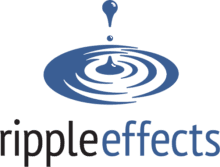MTSS: Where to Begin?
Watch the RecordingListen to the Podcast
The cornerstone of a Multi-Tiered System of Supports (MTSS) is equity—meeting each and every student’s needs regardless of the barriers. Since the steps between wanting to make the change in a district and actually implementing MTSS can seem daunting, experts during the edLeader Panel “MTSS Success: “Light Lift” Solutions & Strategies to Improve Behavior & Mental Health,” offered their tips for getting started.
Take your time and recognize that you probably aren’t starting from scratch. Just starting the process can be overwhelming. Remember, though, MTSS is about organizing school and district resources—behavioral, emotional, and academic—not necessarily about creating a bunch of new programs. Don’t rush the process and think you have to introduce an array of interventions right away.
Inventory your current programs. Instead, look at the three tiers of MTSS. Create a matrix of what programs and supports you already have, which populations they support, and who is leading the programs.
Evaluate the efficacy of current programs. Look at the data and talk with teachers, staff, administrators, students, parents, etc. Find out what’s working, what isn’t, and where you have gaps. This will help you develop a plan for moving forward.
Focus on one or two supports for the first year. You won’t be able to address every problem at once. Select the most important areas for improvement, develop a plan to meet those needs, and work on that implementation.
Invest time in upfront planning. Implementation is strengthened when the heavy work is done first. This includes not only selecting the goals for the coming year, but also staff and teacher training.
Develop a budget that reflects the real costs of MTSS. In order for MTSS to have long-term success, it needs to be financially sustainable as well. Once you have the structure in place, add line items to your budget that reflect the actual cost. That way, you aren’t adding and removing programs every year.
Collect data. Set benchmarks that will show if a support is working or not. Have a central system where staff can input data, analyze the impact of different interventions, and see what programs students are actually using. Review the data periodically throughout the school year to check on progress.
Finally, the panelists offered three keys for effective implementation.
- Staff Competency: All staff members should feel comfortable that they have the knowledge and skills to perform their role in MTSS every day.
- Leadership: Leadership needs to be committed to the district’s MTSS program and be able to effectively communicate the goals to staff and families.
- Implementation: It’s not just about selecting the right program but making sure you have constant feedback, and you need to be willing to change if something isn’t working for your students.
Learn more about this edWeb broadcast, MTSS Success: “Light Lift” Solutions & Strategies to Improve Behavior & Mental Health, sponsored by Ripple Effects.
Watch the RecordingListen to the Podcast
Join the Community
Social-Emotional Learning is a free professional learning community where educators can collaborate and share ideas, examples, and resources for incorporating social-emotional learning in the classroom.
 Ripple Effects is the only digital SEL and mental health program for students and staff that is proven to improve student behavior, academics and SEL skills, and reduce drop-out rates and depression scores. The CASEL aligned Ripple Effects program empowers K-12 learners to build resiliency assets around their personal needs and traumas via over 400 interactive lessons (e.g. anxiety, loneliness, getting help, unplanned change, substance abuse).
Ripple Effects is the only digital SEL and mental health program for students and staff that is proven to improve student behavior, academics and SEL skills, and reduce drop-out rates and depression scores. The CASEL aligned Ripple Effects program empowers K-12 learners to build resiliency assets around their personal needs and traumas via over 400 interactive lessons (e.g. anxiety, loneliness, getting help, unplanned change, substance abuse).
Article by Stacey Pusey, based on this edLeader Panel





Comments are closed.